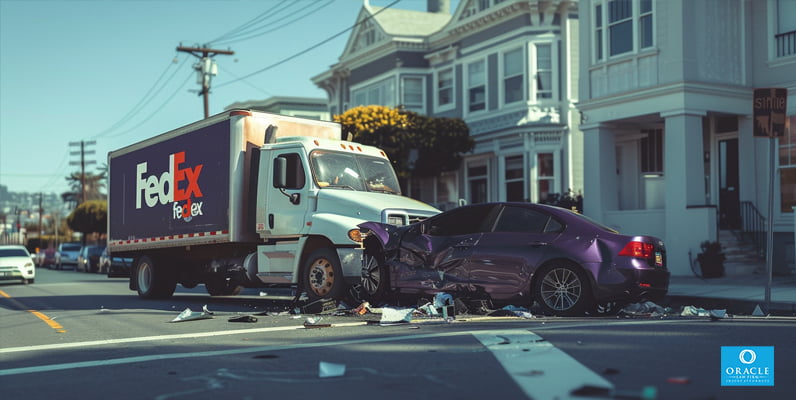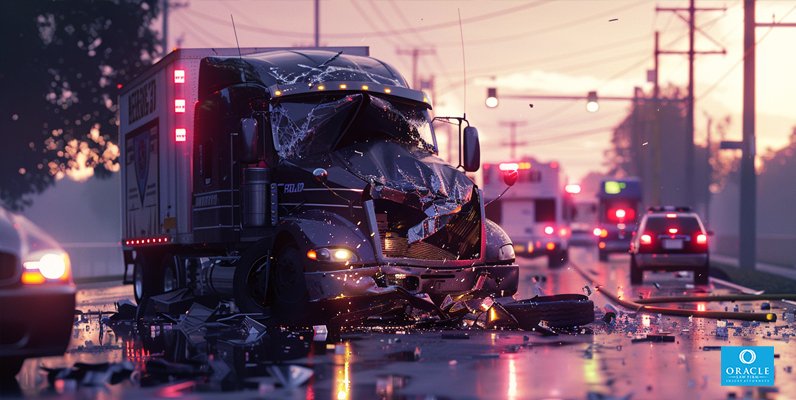With its scenic routes and pleasant weather, California is a haven for motorcycle enthusiasts. However, the freedom of the open road comes with its own set of responsibilities and regulations. California motorcycle laws are designed to ensure the safety of riders and other road users. Understanding these laws is crucial for every motorcyclist, as it helps avoid accidents and deal with the aftermath of a mishap. This guide aims to provide a comprehensive overview of California motorcycle accident laws, from licensing requirements to insurance obligations and how they impact a motorcycle accident case.
California’s Motorcycle Laws and Accidents: What You Need To Know
California motorcycle laws are governed by the California Vehicle Code, which outlines the rules and regulations for all motor vehicles. These laws cover a wide range of aspects, from requiring a motorcycle license to using safety equipment like helmets. Violating these laws can lead to serious consequences, including fines, license suspension, and even imprisonment.
In the event of a motorcycle accident, these laws play a crucial role in determining the liability and compensation. For instance, if a motorcycle rider is found to be violating a law during the accident, it could impact their ability to recover compensation. On the other hand, if the other party is found to be at fault, the motorcycle rider can seek compensation for medical expenses, property damage, and other related costs.
Requirements for Obtaining a Motorcycle License in California
In California, a motorcycle license, or Class M license, is required to operate a motorcycle legally. The process of obtaining a motorcycle license involves several steps, starting with completing the California Motorcyclist Safety Program (CMSP). This program provides motorcycle training to new riders and is a prerequisite for obtaining a motorcycle license for those under 21 years of age.
After completing the CMSP, applicants must pass a written knowledge test and a vision exam at the California Department of Motor Vehicles (DMV). The knowledge test covers various aspects of motorcycle laws, safety features, and riding practices. Once the written test is passed, applicants are issued a motorcycle permit, which allows them to practice riding on public roads under certain restrictions.
Finally, applicants must pass a driving test to obtain their motorcycle license. This test assesses the applicant’s ability to operate a motorcycle safely and comply with California motorcycle laws. In some cases, completion of the CMSP may waive the need for a driving test.

Can you drive alone with a motorcycle permit in California?
A motorcycle permit in California comes with several restrictions. One of the key restrictions is that permit holders are not allowed to drive alone. They must be accompanied by a licensed motorcycle rider at least 21. Additionally, permit holders are not allowed to carry passengers, drive on freeways, or drive during hours of darkness.
These restrictions are designed to ensure the safety of novice riders and other road users. Violating these restrictions can lead to penalties, including the suspension of the permit. It’s important for permit holders to adhere to these restrictions and use this period to gain experience and confidence before they start riding alone.
What happens if you drive a motorcycle without a license in California?
Driving a motorcycle without a valid license in California is a serious offense. The California Vehicle Code Section 12500(a) states that it is illegal to operate a motor vehicle, including motorcycles, without a valid driver’s license. If caught, the penalties can be severe and may include hefty fines, impoundment of the motorcycle, and even jail time in some cases.
Moreover, driving without a license can have serious implications in the event of a motorcycle accident. If an unlicensed rider is involved in an accident, they may face difficulties in claiming compensation from the insurance company, even if they are not at fault. The insurance company may argue that the rider was illegally operating the motorcycle, which could reduce or even deny the claim.
Helmet and Safety Laws (Equipment Rules)
California law is unequivocal regarding using motorcycle helmets while riding a motorcycle. Under the California Vehicle Code Section 27803, all motorcycle riders and passengers must wear helmets that meet the safety standards set by the U.S. Department of Transportation. This law applies to all riders, regardless of age or experience level.
In addition to helmets, California law also mandates using certain safety equipment on motorcycles. This includes a functioning headlight, taillight, turn signals, and rearview mirror. Motorcycles must also be equipped with a muffler to limit noise levels.
These safety laws are designed to protect riders from serious injuries in the event of a motorcycle crash. Violating these laws can lead to penalties and impact the outcome of a personal injury lawsuit following a motorcycle accident.
Motorcycle Helmet Law in California
The Motorcycle Helmet Law in California is one of the most stringent in the country. It requires all motorcycle riders and passengers to wear a safety helmet at all times while riding. The helmet must comply with the safety standards established by the Federal Motor Vehicle Safety Standard 218.
The law is enforced by the California Highway Patrol, and violation of the law can result in a fine. More importantly, failure to wear a helmet can significantly increase the risk of traumatic brain injuries and other serious injuries in the event of a motorcycle accident.
In a personal injury lawsuit following a motorcycle accident, the at-fault party’s insurance company may argue that the rider’s failure to wear a helmet contributed to their injuries. This could potentially reduce the amount of compensation the rider can recover.
Seats and Handlebars for Motorcycles in California
California motorcycle laws also regulate the design and configuration of seats and handlebars on motorcycles. According to the California Vehicle Code, all motorcycles must be equipped with a securely fastened seat during operation. If a motorcycle is designed to carry more than one person, it must have a seat designed for two persons or an additional seat securely fastened at the driver’s rear.
As for handlebars, California law states that they should not be positioned in a manner where the hands of the driver when upon the grips, are more than six inches above his or her shoulder height when sitting astride the seat. This law is designed to ensure that the driver has full control of the motorcycle at all times.
Violating these laws can lead to penalties, including fines and points on the driver’s license. Moreover, non-compliance with these laws can also impact the outcome of a personal injury lawsuit following a motorcycle accident.

Transporting Passengers on a Motorcycle
Transporting passengers on a motorcycle comes with additional responsibilities and regulations. As per California law, a motorcycle can carry a passenger only if it is designed to do so. This means the motorcycle must have a dedicated seat for the passenger, along with footrests.
The law also mandates that all passengers must wear helmets that meet the safety standards set by the U.S. Department of Transportation. Passengers must also keep their feet on the footrests at all times while the motorcycle is in motion.
Failure to comply with these laws can lead to penalties and can also have serious implications in the event of a motorcycle accident. If a passenger is injured in an accident, and the motorcycle is not equipped to carry passengers, it could impact the passenger’s ability to recover compensation.
How Dangerous is Riding a Motorcycle?
Riding a motorcycle can be exhilarating, but it also has inherent risks. Motorcycles are less stable and less visible than cars, and they don’t offer the same protection as a car in the event of a crash. As a result, motorcycle accidents often result in serious injuries, including traumatic brain injuries, spinal cord injuries, and severe road rash.
According to the California Highway Patrol, motorcycle riders are 28 times more likely to die in a crash than occupants of other vehicles. This underscores the importance of adhering to California motorcycle laws, including those related to licensing, safety equipment, and riding practices.
Common Causes of Motorcycle Accidents
Motorcycle accidents can be caused by a variety of factors. Some of the most common causes include speeding, alcohol and drug use, lane splitting, and collisions with other vehicles. Other factors like road debris, poor weather conditions, and mechanical defects can also contribute to motorcycle accidents.
In many cases, motorcycle accidents are caused by the negligence of other drivers. This can include failing to yield the right of way to a motorcycle, following a motorcycle too closely, or failing to check blind spots before changing lanes.

California Motorcycle Accident Laws Are Geared Toward Safety
California motorcycle accident laws are designed to promote safety and reduce the number of motorcycle accidents. These laws regulate everything from licensing and insurance requirements to safety equipment and riding practices. By adhering to these laws, motorcycle riders can significantly reduce their risk of being involved in an accident.
However, in the event of an accident, these laws also provide a framework for determining liability and compensation. This includes the concept of comparative negligence, which allows a motorcycle rider to recover compensation even if they were partially at fault for the accident.
How Oracle Law Firm | Accident & Injury Attorneys Injury Attorney Can Help With a Motorcycle Accident Claim
If you’ve been involved in a motorcycle accident, seeking legal representation as soon as possible is important. An experienced personal injury law firm like Oracle Law Firm | Accident & Injury Attorneys can help you navigate the complex process of filing a claim, dealing with insurance companies, and pursuing a personal injury lawsuit if necessary.
Our attorneys deeply understand California motorcycle accident laws, and we can use this knowledge to build a strong case on your behalf. We can help you gather evidence, calculate your damages, and negotiate with the insurance company to ensure you receive the compensation you deserve.
Remember, the aftermath of a motorcycle accident can be overwhelming, but you don’t have to go through it alone. Contact us today for a free consultation, and let us help you on your road to recovery.






